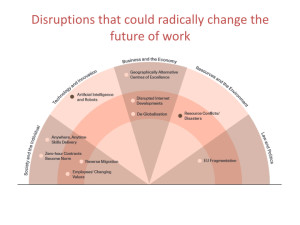
mohamed_hassan (CC0), Pixabay
Pontydysgu is very happy to be part of a consortium, led by DMH Associates, selected as a finalist for the CareerTech Challenge Prize!
The project is called CareerChat and the ‘pitch’ video above expalisn the ideas behind the project. CareerChat is a chatbot providing a personalised, guided career journey experience for working adults aged 24 to 65 in low skilled jobs in three major cities: Bristol, Derby and Newcastle. It offers informed, friendly and flexible high-quality, local contextual and national labour market information including specific course/training opportunities, and job vacancies to support adults within ‘at risk’ sectors and occupations
CareerChat incorporates advanced AI technologies, database applications and Natural Language Processing and can be accessed on computers, mobile phones and devices. It allows users to reflect, explore, find out and identify pathways and access to new training and work opportunities.
Nesta is delivering the CareerTech Challenge in partnership with the Department for Education as part of their National Retraining Scheme
- Nesta research suggests that more than six million people in the UK are currently employed in occupations that are likely to radically change or entirely disappear by 2030 due to automation, population aging, urbanisation and the rise of the green economy.
- In the nearer-term, the coronavirus crisis has intensified the importance of this problem. Recent warnings suggest that a prolonged lockdown could result in 6.5 million people losing their jobs. [1] Of these workers, nearly 80% do not have a university degree. [2]
- The solutions being funded through the CareerTech Challenge are designed to support people who will be hit the hardest by an insecure job market over the coming years. This includes those without a degree, and working in sectors such as retail, manufacturing, construction and transport.
You can find out more information about the programme here: https://www.nesta.org.uk/project/careertech-challenge/ and email Graham Attwell directly if you would like to know more about the CareerChat project


